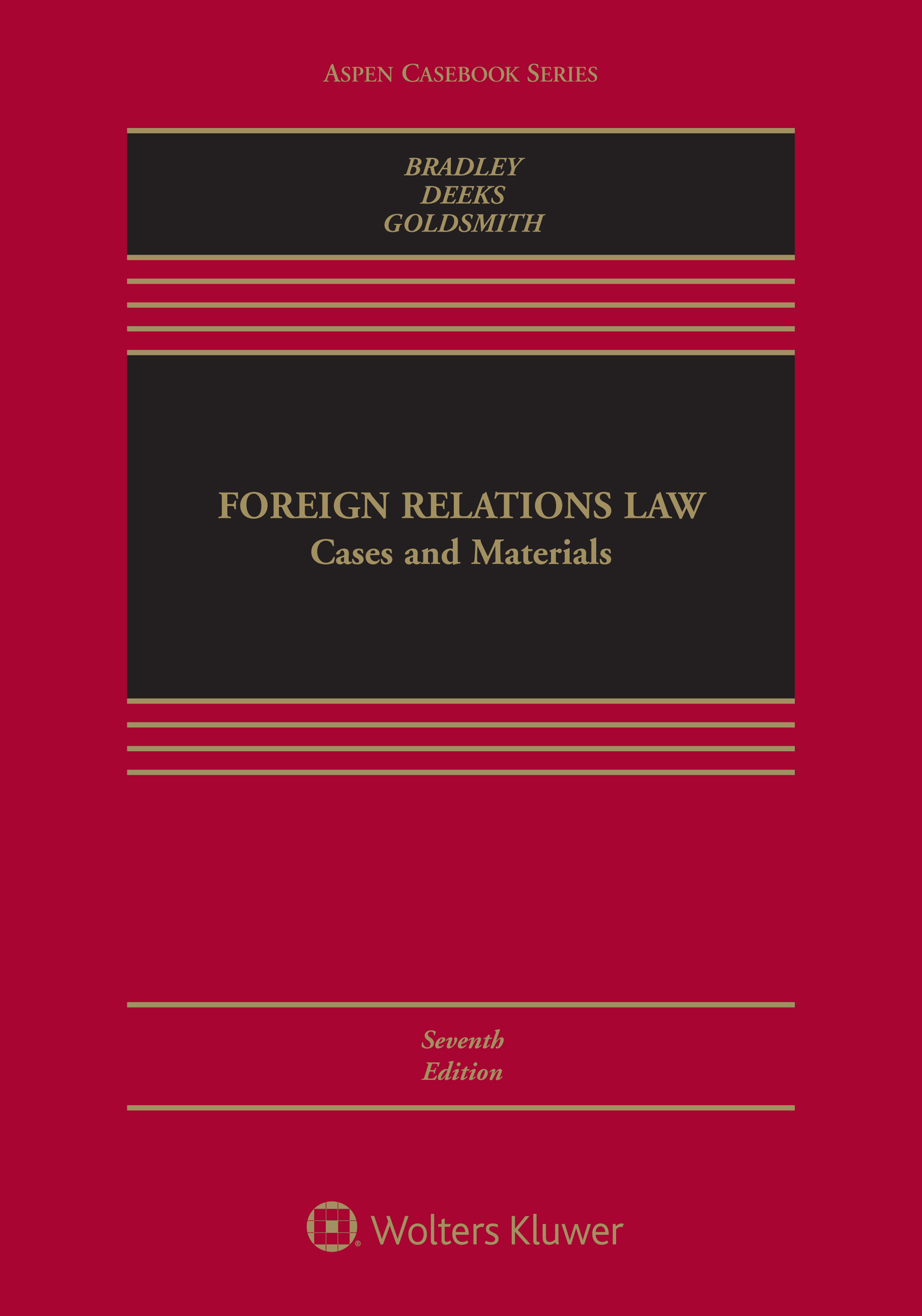- 丛书名 : Aspen Casebook Series
- 中图分类号: D91
- 语种: ENG
- 出版信息: Aspen Publishers 2020 944页
- EISBN: 9781543813654
- PISBN-P: 9781543813654
- 原文访问地址:
KG评星
知识图谱评星,是一种基于用户使用的评价体系,综合图书的评论数量、引文数量、Amazon评分以及图谱网络中节点的PageRank值(即考虑相邻节点数量和重要性)等多种因素计算而得出的评价数值。星级越高,推荐值越高。CAT核心级
核心学术资源(CAR)项目作为教图公司推出的一项知识型服务,旨在打造一套科学、有效的图书评价体系,并协助用户制定相应的馆藏建设方案。CAR项目调查和分析12所世界一流大学的藏书数据,以收藏学校的数量确定书目的核心级,核心级越高,代表书目的馆藏价值越高。选取核心级在三级以上,即三校以上共藏的图书作为核心书目(CAT)。A leading casebook on foreign relations law, authored by widely cited scholars who also have pertinent government experience, Foreign Relations Law: Cases and Materials, Seventh Edition, examines the law that regulates how the United States interacts with other nations and with international institutions, and how it applies international law within its legal system. The book offers a compelling mix of cases, statutes, and executive branch materials, as well as extensive notes and questions and discussion of relevant historical background. New to the Seventh Edition: Addition of a third author, Ashley Deeks, a scholar with government experience as well as significant expertise in national security law, the laws of war, and intelligence gathering New excerpt of and extensive notes on the Supreme Courts 2018 travel ban decision, Trump v. Hawaii Coverage of the Supreme Courts 2018 Alien Tort Statute decision, Jesner v. Arab Bank Extensive discussion of recent treaty terminations by the Trump administration Discussion of the ongoing litigation concerning sanctuary jurisdictions in some states and localities Notes and questions on recent war powers developments, including on the use of force against the Islamic State and in Syria Updated notes and questions throughout the book to take account of recent cases, statutes, executive branch actions, and scholarship Professors and students will benefit from: Clear and logical progression of the materials, starting with the powers of government institutions and then proceeding to specific substantive topics Coverage of both cutting-edge legal developments and relevant historical background Integration of leading scholarship into the notes and questions rather than in long excerpts of secondary materials Balanced presentation of controversial topics, with probing questions to consider in class discussions Combination of theoretical analysis with practical insights from real-world examples







 京公网安备 11010602104826号
京公网安备 11010602104826号
